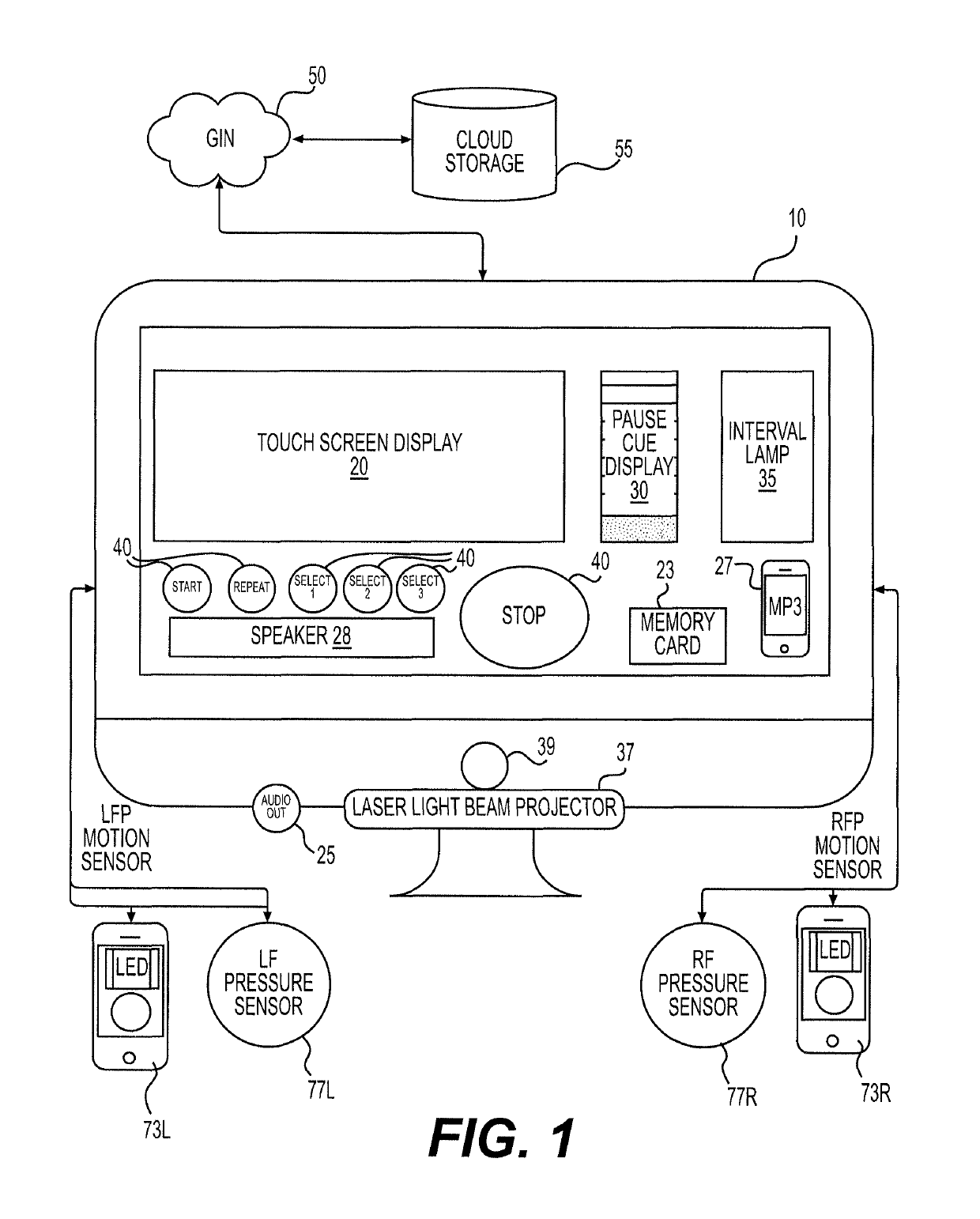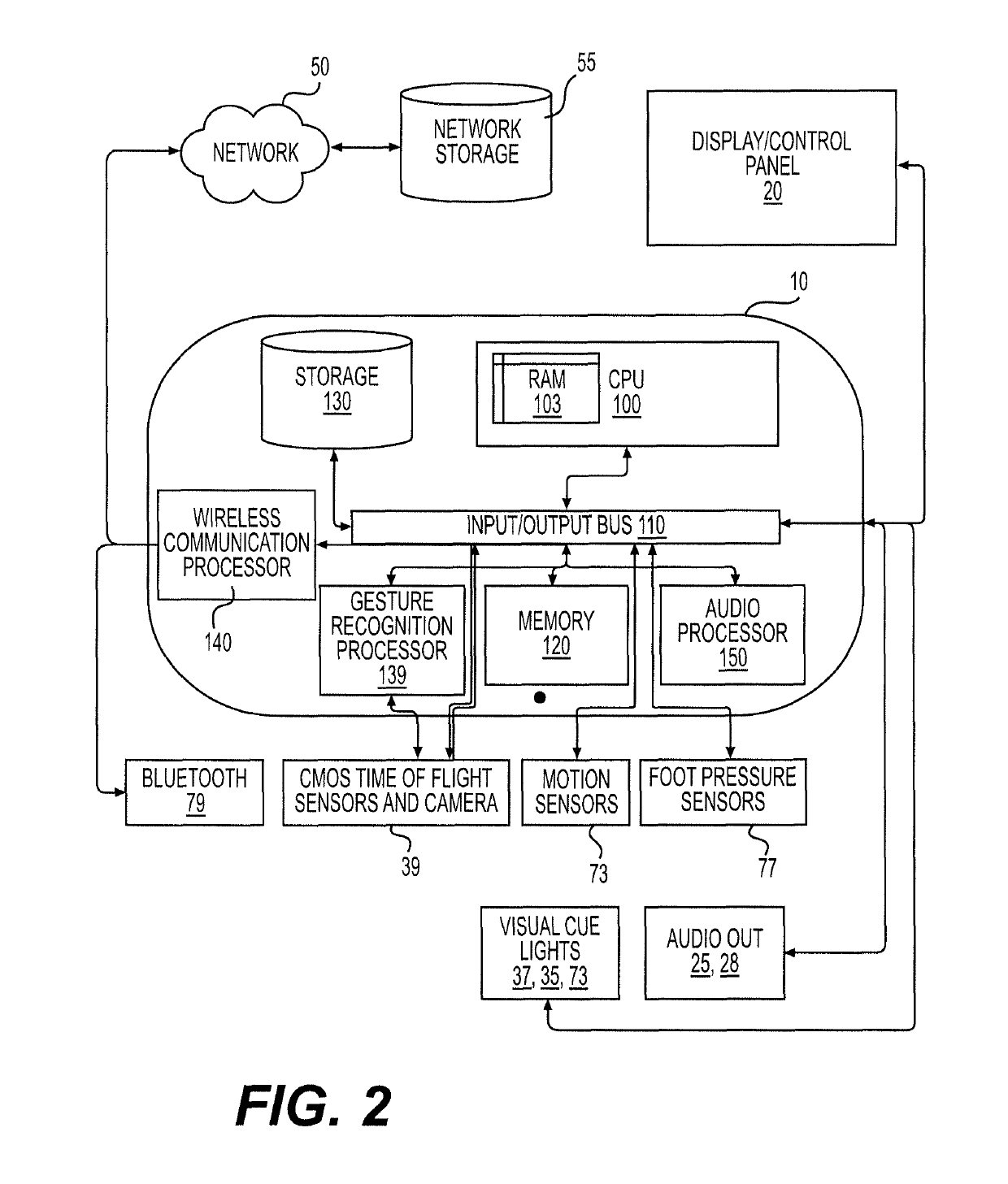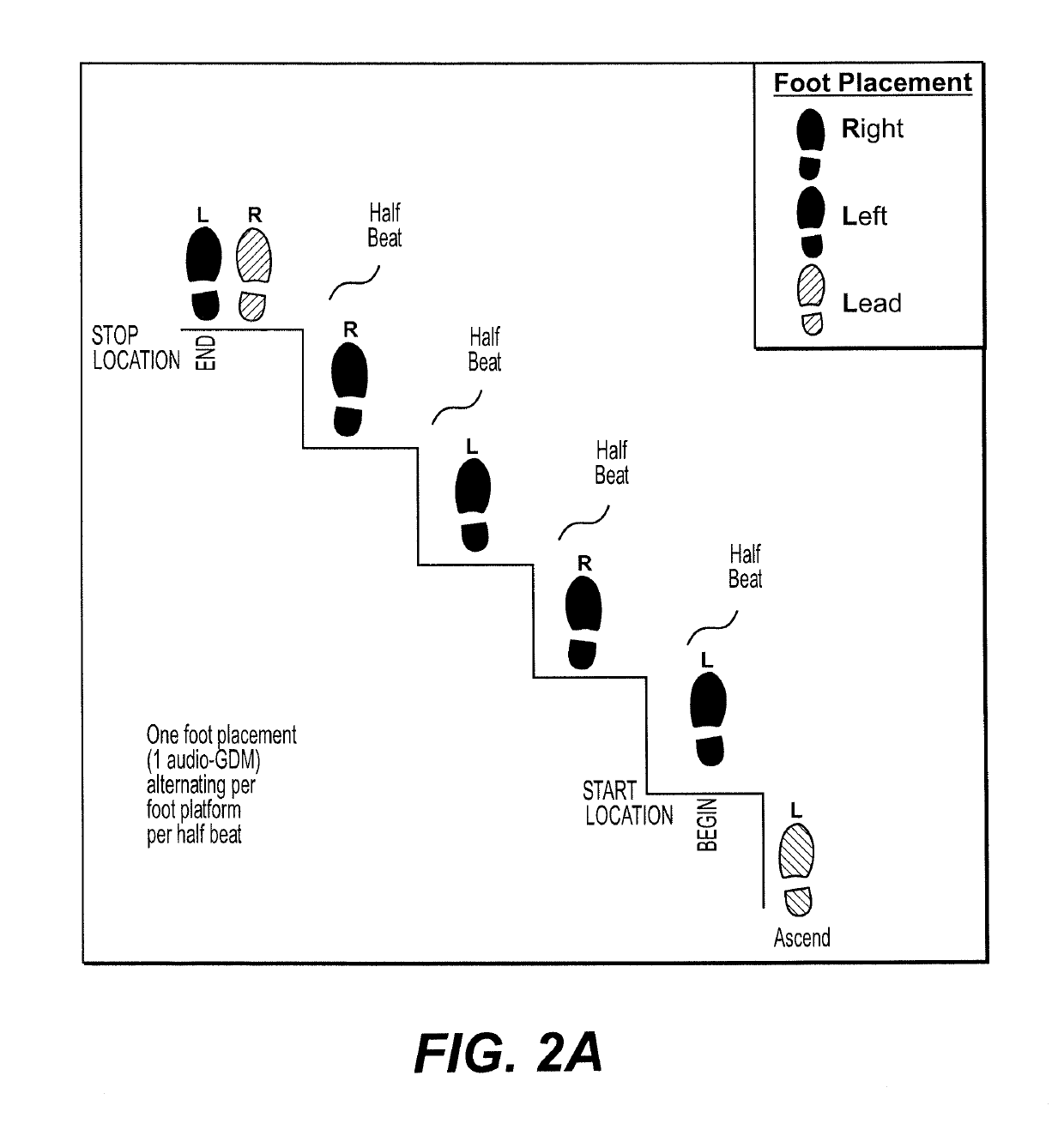Equipment, system and method for improving exercise efficiency in a cardio-fitness machine
a cardio-fitness machine and exercise efficiency technology, applied in the field of equipment, system and method for improving exercise efficiency in a cardio-fitness machine, can solve the problem that the upper limbs (arms) of users are typically unsupported, and achieve the effect of enhancing the enhancing performance of rhythmic tasks, and achieving performance objectives
- Summary
- Abstract
- Description
- Claims
- Application Information
AI Technical Summary
Benefits of technology
Problems solved by technology
Method used
Image
Examples
Embodiment Construction
[0040]FIG. 1 is a schematic representation of the Control Panel 10 and related hardware of an embodiment of the invention. As shown, the Control Panel 10 includes a multi-touch screen display 20, a speaker 28, a pause cue display 30, an interval lamp 35, a laser light beam projector 37, and various user input selection buttons 40 (including a START button, a REPEAT button and a STOP button). The Control Panel 10 has various input and output connections (jacks) for receiving connection to motion and pressure sensors (e.g., 73R, 73L, 77R, 77L) and also includes an audio out connection (jack) 25 to allow a user to connect a headset. Naturally, wireless connections (such as Bluetooth) could be used in lieu of any of the hardwired connections to connect sensors, headphones or other components to the Control Panel 10. Wireless connectivity may be necessary when movement / pressure sensors located on the user (such as in the user's shoes or on the user's clothing) are used instead of sensors...
PUM
 Login to View More
Login to View More Abstract
Description
Claims
Application Information
 Login to View More
Login to View More - R&D
- Intellectual Property
- Life Sciences
- Materials
- Tech Scout
- Unparalleled Data Quality
- Higher Quality Content
- 60% Fewer Hallucinations
Browse by: Latest US Patents, China's latest patents, Technical Efficacy Thesaurus, Application Domain, Technology Topic, Popular Technical Reports.
© 2025 PatSnap. All rights reserved.Legal|Privacy policy|Modern Slavery Act Transparency Statement|Sitemap|About US| Contact US: help@patsnap.com



